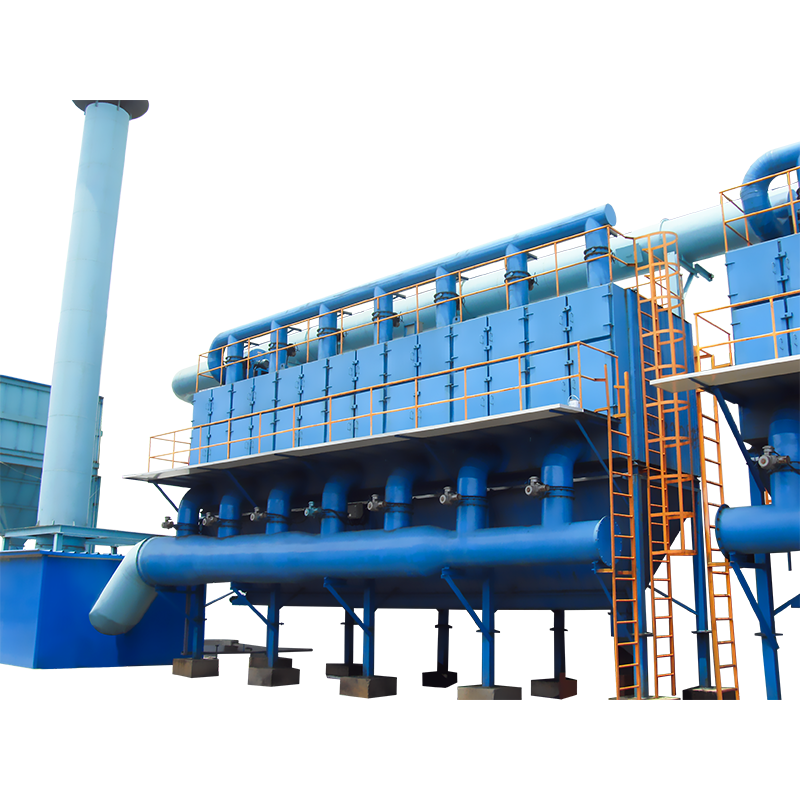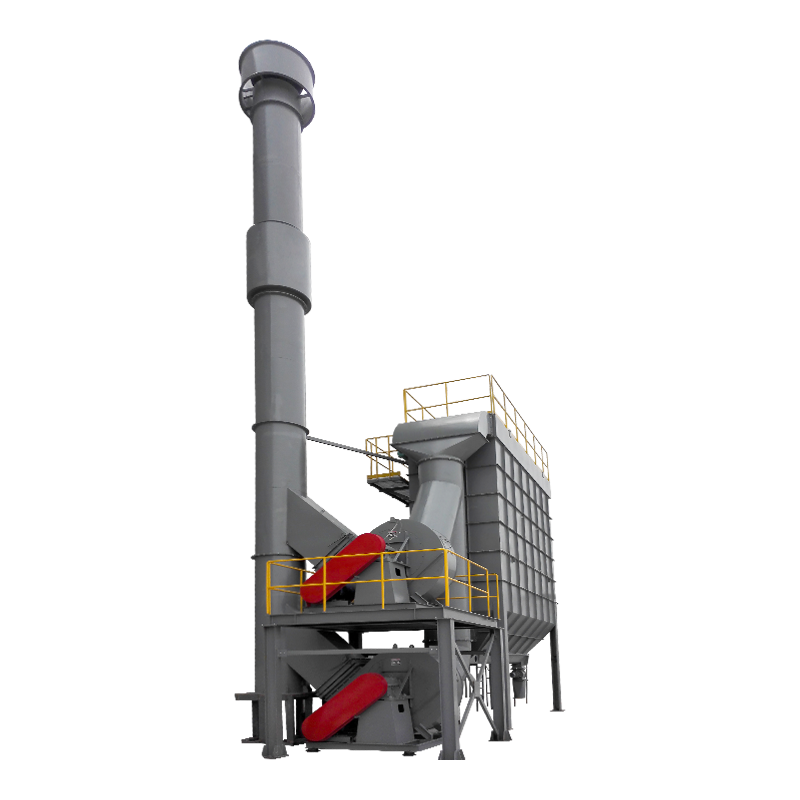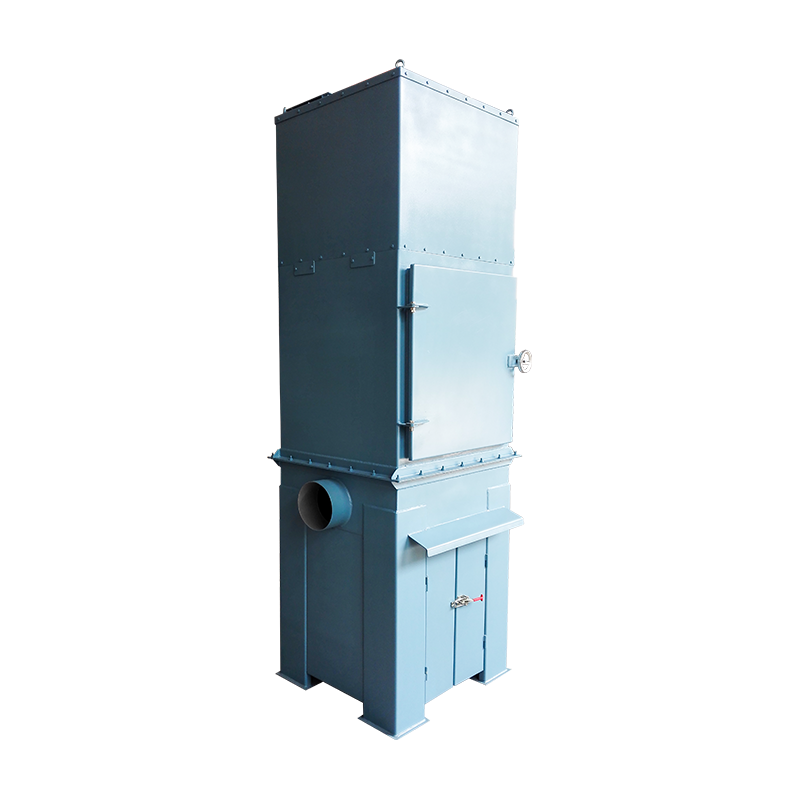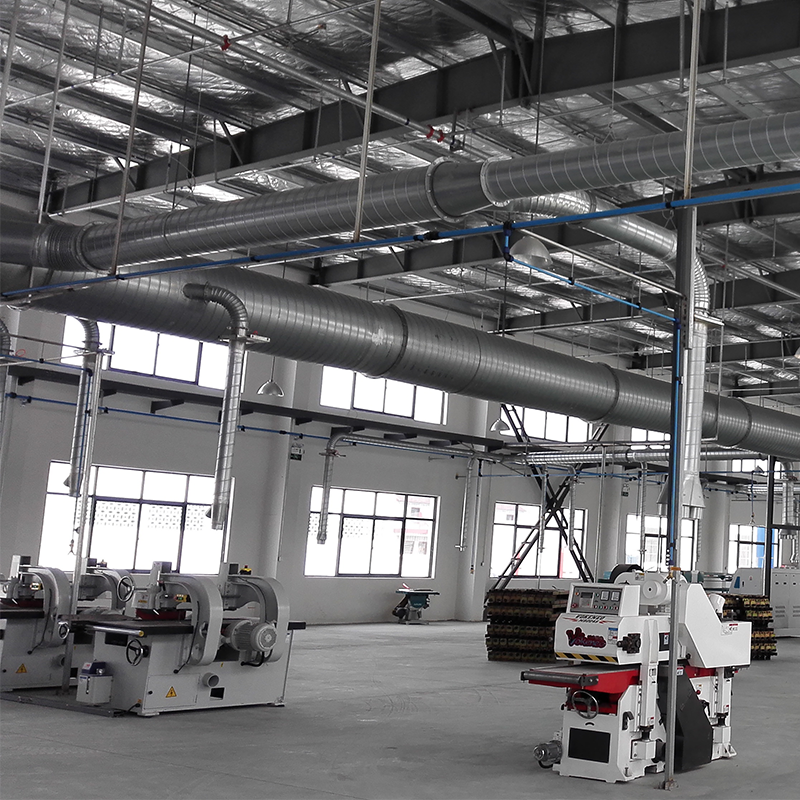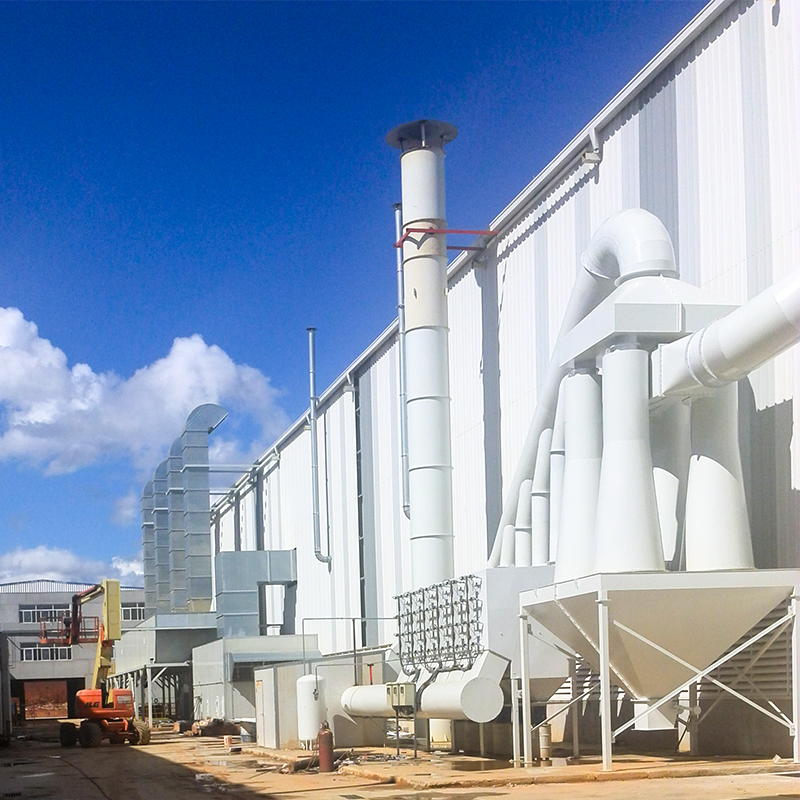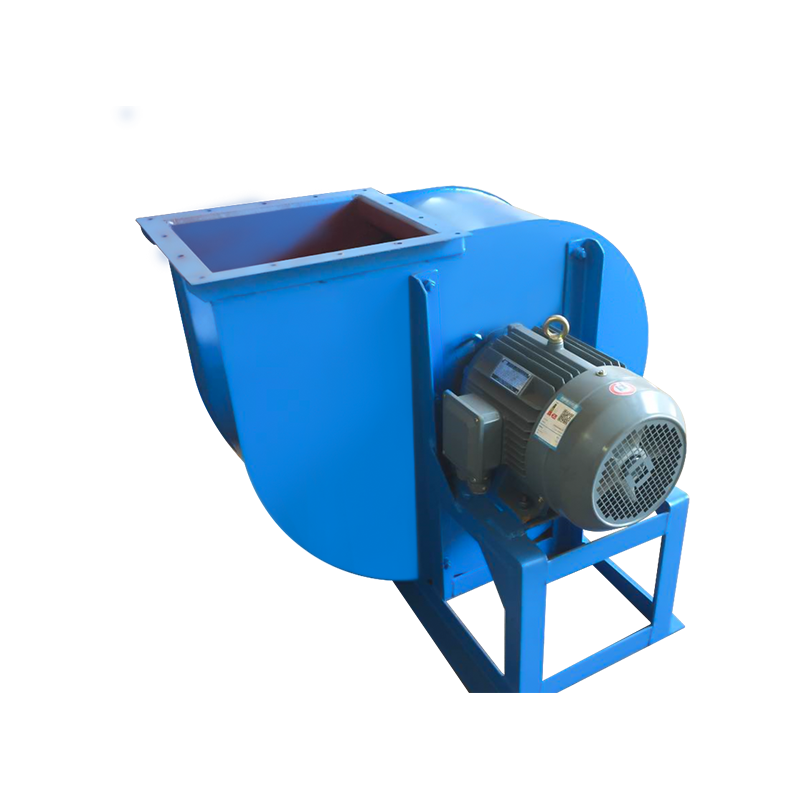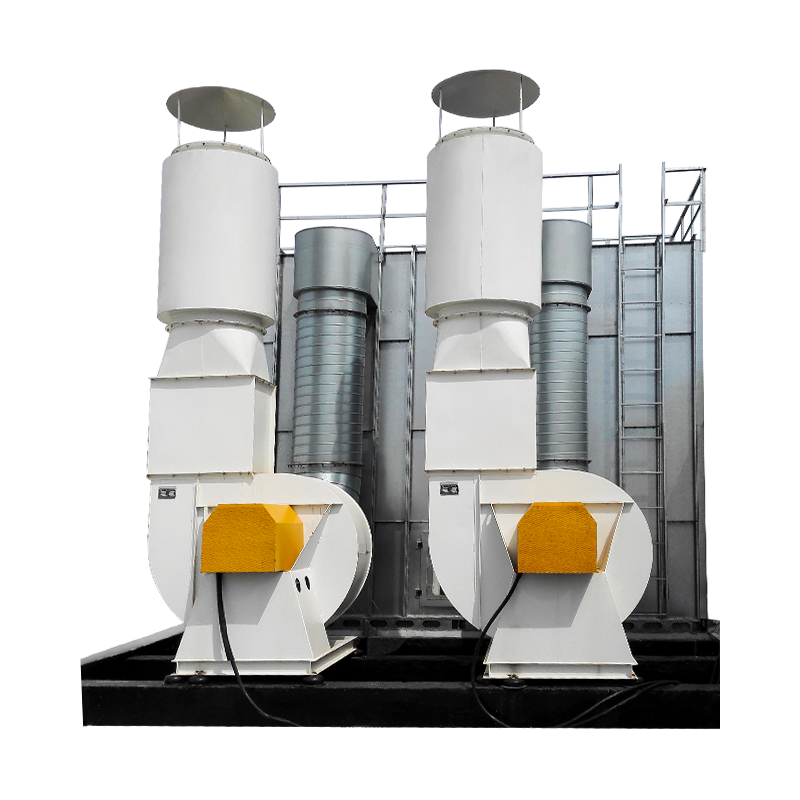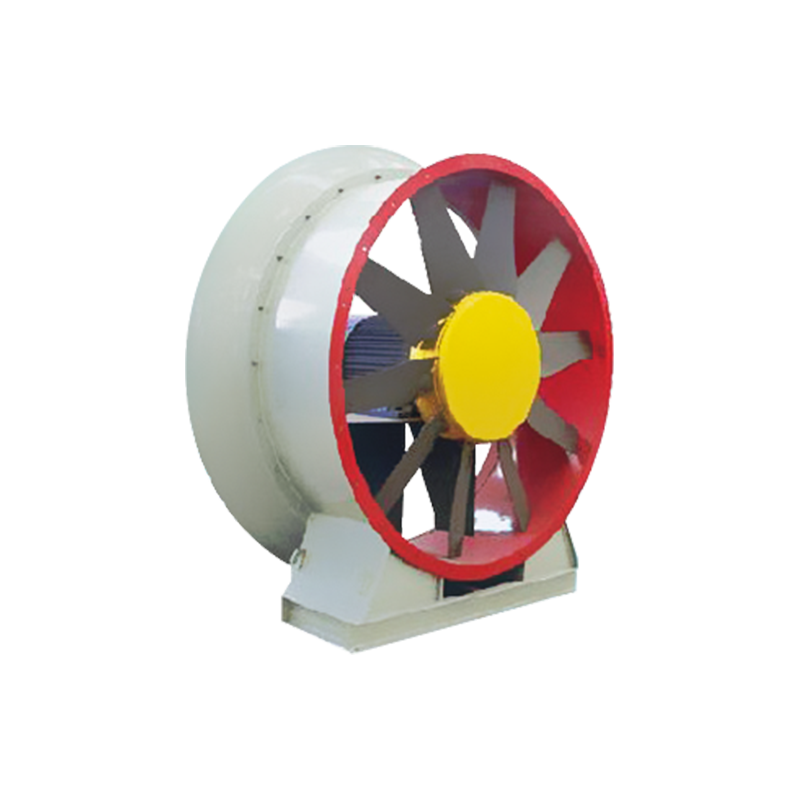In the vast ecosystem of modern industry, industrial centrifugal fans are like a powerful "power heart," providing indispensable support for numerous production processes. With their unique operating principle, diverse structural designs, and superior performance, they are widely used in various industrial fields, becoming a key device that drives efficient and stable industrial operations.
Operating Principle: A Gas Transport Mechanism Core to Centrifugal Force
Industrial centrifugal fans operate on a simple yet highly effective principle: centrifugal force. When the fan's motor is turned on, it drives the impeller to rotate at high speed. The impeller's blades rotate accordingly, drawing air axially into the fan's inlet. The centrifugal force generated by the high-speed rotation of the impeller rapidly propels the air toward the impeller's outer edge, acquiring high velocity and kinetic energy. At this point, the air flow direction changes from axial to radial. High-speed gas exiting the impeller enters the diffuser, where its cross-sectional area gradually increases and the gas velocity decreases. According to the law of conservation of energy, kinetic energy is converted into pressure energy, further increasing the gas pressure before it is discharged from the fan outlet, completing the gas transportation and pressurization process. This method of utilizing centrifugal force to process gas enables industrial centrifugal fans to efficiently transport large quantities of gas under diverse operating conditions, meeting the needs of various industrial production processes.
Structural Design: Scientific Layout Achieves Excellent Performance
The structural design of industrial centrifugal fans has undergone extensive development and optimization. Each component has a clear function and role, working together to achieve efficient fan operation.

Impeller: Precision Design of Core Components
The impeller is the core component of an industrial centrifugal fan, and its design directly affects its performance. The impeller typically consists of multiple blades fixed to a hub. The blade shape, number, angle, and connection method to the hub are carefully designed. Common blade shapes include forward-inclined, backward-inclined, and radial. Forward-inclined blades can provide high airflow within a smaller space, but their efficiency is relatively low under high-pressure conditions. Backward-inclined blades offer greater efficiency and stability under high-pressure conditions and are suitable for applications with higher pressure requirements. Radial blades offer a balance of airflow and pressure performance. Impeller manufacturing requires extremely high precision, with blade surface roughness and angular deviation strictly controlled to ensure uniform and stable centrifugal force at high speeds, minimizing gas flow losses and vibration.
Casing: A Gas Guide and Protective Shield
The casing is the outer shell surrounding the impeller. It not only provides a closed working space for the impeller, preventing gas leakage, but also plays a vital role in guiding gas flow. The casing is typically spiral in shape, which gradually decelerates the high-speed gas discharged from the impeller within the casing, more efficiently converting kinetic energy into pressure energy. The casing material and structural strength should be selected based on the fan's operating pressure, temperature, and the characteristics of the gas being transported. For fans conveying corrosive gases, the casing is typically made of corrosion-resistant stainless steel. Fans operating in high-temperature environments require high-temperature-resistant materials and thermal insulation to ensure proper operation and longevity.
Motor and Transmission: Power Source and Transmission
The motor is the power source of an industrial centrifugal fan, providing the torque required to rotate the impeller. The motor's power should be determined based on the fan's air volume, air pressure requirements, and operating efficiency, ensuring that the motor can operate efficiently while meeting the fan's operational requirements. The transmission is responsible for transmitting the motor's power to the impeller. Common transmission methods include direct drive and belt drive. Direct drive offers a simple structure and high transmission efficiency, but requires high precision in the installation of the motor and impeller. Belt drive provides a certain degree of cushioning, can accommodate installation errors, and can adjust the impeller speed by adjusting the belt tension, thus adjusting fan performance.
Performance Advantages: Efficient, Stable, and Reliable Industrial Guarantee
Industrial centrifugal fans offer numerous performance advantages, making them a preferred choice in the industrial sector. High Pressure and High Volume Output
Industrial centrifugal fans can deliver high-pressure and high-volume gas under diverse operating conditions. Through appropriate impeller design and motor selection, they can meet diverse application requirements, from low-pressure ventilation to high-pressure gas compression. Ventilation systems in large industrial plants require high-volume fans to draw in fresh air and expel contaminated air, tasks for which industrial centrifugal fans are readily adaptable. Processes in industries like chemical and pharmaceutical industries require high-pressure gas delivery, and industrial centrifugal fans, with their superior pressure performance, ensure smooth production.
High-Efficiency Operation
Modern industrial centrifugal fans utilize advanced fluid dynamics design and manufacturing processes to significantly improve their operating efficiency. Optimized impeller shapes and blade angles reduce resistance and energy loss during gas flow, enabling them to deliver large volumes of gas with minimal energy consumption. Some energy-efficient industrial centrifugal fans boast efficiency several times higher than traditional fans, reducing energy costs for businesses while also meeting current societal demands for energy conservation and emission reduction. Stable and Reliable Operation
The structural design and manufacturing process of industrial centrifugal fans ensure their long-term stability and reliability. The sturdy casing and impeller structure can withstand the tremendous centrifugal forces and gas pressure generated by high-speed rotation. High-quality bearings and seals reduce mechanical wear and gas leakage, extending the fan's service life. Furthermore, each fan undergoes rigorous performance testing and quality inspection before shipment, ensuring that each fan can operate stably in harsh industrial environments and provide reliable support for the production process.
Application Areas: Widely Covered in Every Corner of Industry
Industrial centrifugal fans, with their outstanding performance, are widely used in various aspects of the industrial sector.
Ventilation and Air Exchange
In industrial spaces such as factories, workshops, and warehouses, good ventilation is crucial for ensuring worker health and a safe production environment. Industrial centrifugal fans draw fresh air from the outdoors into the room while simultaneously exhausting harmful gases, dust, and odors, maintaining fresh and flowing air. In high-temperature workshops, such as steel mills and foundries, fans can also help reduce indoor temperatures and improve the working environment through ventilation.

Air Purification and Dust Removal
In industries with severe dust pollution, such as mines, cement plants, and power plants, industrial centrifugal fans are a crucial component of dust removal systems. Working in conjunction with dust collectors, they draw dust-laden air into the dust collector, filter and purify it, and then discharge the clean air. This effectively reduces dust pollution and protects the health of workers. In industries with high air quality requirements, such as electronics and pharmaceuticals, industrial centrifugal fans can also be used in air purification systems to remove fine particles and microorganisms from the air, providing a clean air environment for production processes.
Gas Delivery and Process Support
In the chemical, petroleum, and natural gas industries, industrial centrifugal fans are used to transport various gaseous media, such as oxygen, nitrogen, hydrogen, and petroleum gas. In the production processes of these industries, gas delivery and pressure control are crucial to process stability and product quality. Industrial centrifugal fans can precisely control gas flow and pressure according to process requirements, ensuring smooth production. In specialized processes such as painting, drying, and fermentation, fans can also provide specific airflow environments to meet the process's temperature, humidity, and gas flow requirements.
As essential industrial equipment, industrial centrifugal fans play an irreplaceable role in industrial production. Their operating principles, structural design, performance advantages, and wide range of applications make them a vital force driving industrial development. With continuous technological advancements, industrial centrifugal fans will develop towards greater efficiency, intelligence, and environmental friendliness, injecting new vitality into the sustainable development of the industrial sector. In future industrial development, industrial centrifugal fans will continue to play their role as the "power heart," providing a solid foundation for the prosperity of various industries.

 English
English Español
Español عربى
عربى
